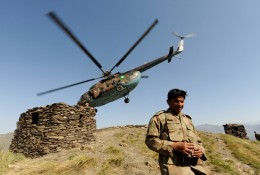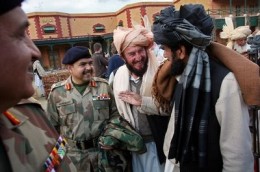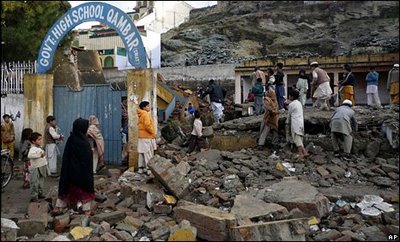By Ali Abbas Rizvi
 With the Swat operation now more or less over, it is time for the return of the IDPs. However, the military operation in South Waziristan has just commenced. How different will it be from the operation that has recently concluded? Taking into account several factors, one expects it to be vastly different. Consider the following.
With the Swat operation now more or less over, it is time for the return of the IDPs. However, the military operation in South Waziristan has just commenced. How different will it be from the operation that has recently concluded? Taking into account several factors, one expects it to be vastly different. Consider the following.
First, the size of Waziristan, both North and South, is almost two and a half times the size of the Swat valley. It is a rough terrain, sparsely populated unlike the lush green Swat valley, which was densely populated. As such, security forces will adopt different strategies and parameters to operate in this inhospitable terrain, not all of them uncomplicated.
Second, unlike Swat, which was a settled area encircled by Buner, Dir, Shangla and Chitral, South Waziristan shares a long porous border with Afghanistan besides North Waziristan, where the army is not presently launching an operation.
Therefore, for militants in South Waziristan, getting supplies and reinforcements may not be a huge problem unlike their ‘adolescent’ cousins in Swat. Third, South Waziristan hosts a much larger concentration of militants, including Uzbeks and Al Qaeda, as compared to Swat. Many of these jihadis, entrenched here for the past several years, are battle-hardened, better-trained and better-equipped than their counterparts in Swat.
They are not novices like their cousins in the valley but veterans of the Afghan war. As such, they will pose a grave challenge to security forces. Fourth, the single most important factor in the whole scenario is that unlike the militants in Swat, the Taliban and Al Qaeda in South Waziristan are facing an increasing number of US drone attacks.
These attacks are turning out to be extremely effective, accurate and demoralising for the militants. Fifth, there has been a significant change in the American mindset with Washington no longer treating Baitullah Mehsud as Pakistan-specific problem. The Americans are sharing more information with the army, even providing real time intelligence on the movement of militants in the region, say reports.
Some other welcoming aspects of the fighting in Waziristan for the army are subsequent to a major strategic reorientation, security services now have a sense of direction and purpose in the war against terror, that the media coverage will not be as intensive as that in Swat, the issue of IDPs will not be as large as that of Malakand and the army will have at its disposal resources to instil doubts and insecurity in commanders allied to Baitullah and sow dissension and divisions among them.
The army’s counterinsurgency strategy seems to have two components. The first is high-intensity kinetic operations and the second is clear political counter-vision. The military strategy could be to pound the militants from air, target them from drones, force them to retreat to caves, use artillery to hit known and suspected targets and command and control centres and use personnel of Special Services Group to hit far-off militants’ hideouts. For a sustained and successful operation, the army will also require combat and cargo helicopters, night-vision devices, counter-fire radars, drones, sensors and battlefield surveillance radars.
The army may have calculated that over a period of time, the Taliban will be demoralised, become prone to error and could rise up against their own comrades. Baitullah is the centre of gravity that holds the entire structure together.
The day Baitullah is gone the militants will lose their sting. For security forces, time is of essence. They will have to keep the militants from taking over the cleared territory again. For this, they will require the support of an effective administration and deploy troops to develop confidence in the local population. They cannot afford to lose the support of the people, parliament and the government for the operation, the three key variables.
On the other hand, the trump card that Baitullah holds is suicide attacks. He will try to create chaos in major cities through such attacks. While every suicide attack will bring pain and destruction in its wake, for the people of Pakistan it is something that has been happening for quite sometime. The more it happens, the more it loses its intrinsic value.
 On the battlefield, Baitullah will launch ambushes, frontal attacks, improvised explosive devices, diversionary strikes, bait and ambush attacks, hit-and-run raids, anti-armour and RPG ambushes, sniper and suicide attacks. Also, long military columns moving at slow speeds are vulnerable to attacks by militants familiar with the terrain.
On the battlefield, Baitullah will launch ambushes, frontal attacks, improvised explosive devices, diversionary strikes, bait and ambush attacks, hit-and-run raids, anti-armour and RPG ambushes, sniper and suicide attacks. Also, long military columns moving at slow speeds are vulnerable to attacks by militants familiar with the terrain.
In any case, Waziristan is going to be a tough operation for security forces. However, as things stand today, there is no easy way out.
The writer is news editor, The News, Karachi. Email: [email protected]
-(Source: The News)-










